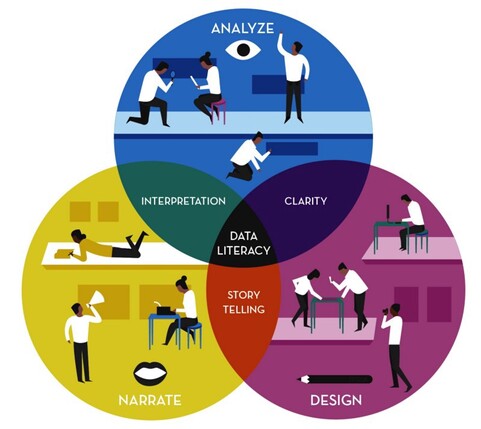|
In college I met a group of guys that loved to meet on a field, carry an odd shaped ball around, and run into each other with no equipment. They called this high intensity game rugby. One day they asked me if I was interested in playing. It looked simple enough and fun, so I said sure. Once we started playing I quickly realized that while I had the physical tools needed to be proficient in this game, I didn’t understand the rules or language of rugby. I had no idea what a lineout was. I didn’t understand why hands couldn’t be used in a ruck. Every time they yelled “SCRUM!” it took me a few seconds to realize what was coming next. I was rugby illiterate and it was holding me back. It is easy to have a similar feeling of confusion and bewilderment come over you when it comes to data and analytics. The goal of this piece is to arm you with the basic terminology needed to be data literate and unleash your analytical potential. What Is Data Literacy? Data literacy means you know what data you’re tracking, why you’re tracking it, how to interpret it, and how to use that data to develop new capabilities, grow sales, reduce costs and/or do your job better/more efficiently. What Does Data Literacy Success Look Like?
Data literate people have the following skills:
In today’s tech centric, data driven world it is easy to see why being competent and comfortable with data is an essential skill. It All Starts With A Corner Stone Understanding the language of data is an essential foundational pillar for anyone looking to develop data literacy. This overview is intended for what I call “casual data consumers”. These are professionals that don’t deal with advanced data and analytics projects on a regular basis. The definitions here will be in plain English. We are looking to establish a baseline level of knowledge and confidence to become more data fluent. You don’t need to know advanced statistical, data engineering or modeling techniques to make this happen. Consider the words of Brent Dykes below: “Just like people don’t need an advanced English degree to be literate, your employees don’t need advanced statistical knowledge and programming skills in Python or R to be data literate. Reading and writing skill levels are often defined by what people can or can’t accomplish in their everyday life—we must do the same for data literacy.” Do You REALLY Need To Be Data Literate? Yes, you do. You don’t need to know the intricate minutiae, but you need to know the basics. Here’s an example: You may not be an accountant, but that shouldn’t prevent you from understanding the fundamental financial concepts of revenues and costs. Additionally, while you might not be creating financial statements, you need to understand how financial statements work. In the same way, while you might not be creating the databases, web platforms, data connectors, etc that provide the data you use for decision making, you need to have a fundamental level of knowledge on how these things work and the data they provide. That understanding will help you do your job better. Part 2 of this data literacy series, A Company’s Most Valuable Asset? Data, will dig into what data is. Part 3, Cognitive Biases – Powerful, Necessary, and Potentially Harmful, will dig into biases and why we must be aware of them Part 4, Data Literacy Playbook: A Path To Business Superpowers, offers a simple framework to start applying the data literacy fundamentals highlighted in this series. Like this content? Be sure to join our newsletter list and follow me on LinkedIn. Comments are closed.
|
�
Follow me on LinkedIn for daily content on analytics, data, strategy, and business
Categories
All
|
ServicesResources |
Company |
|




